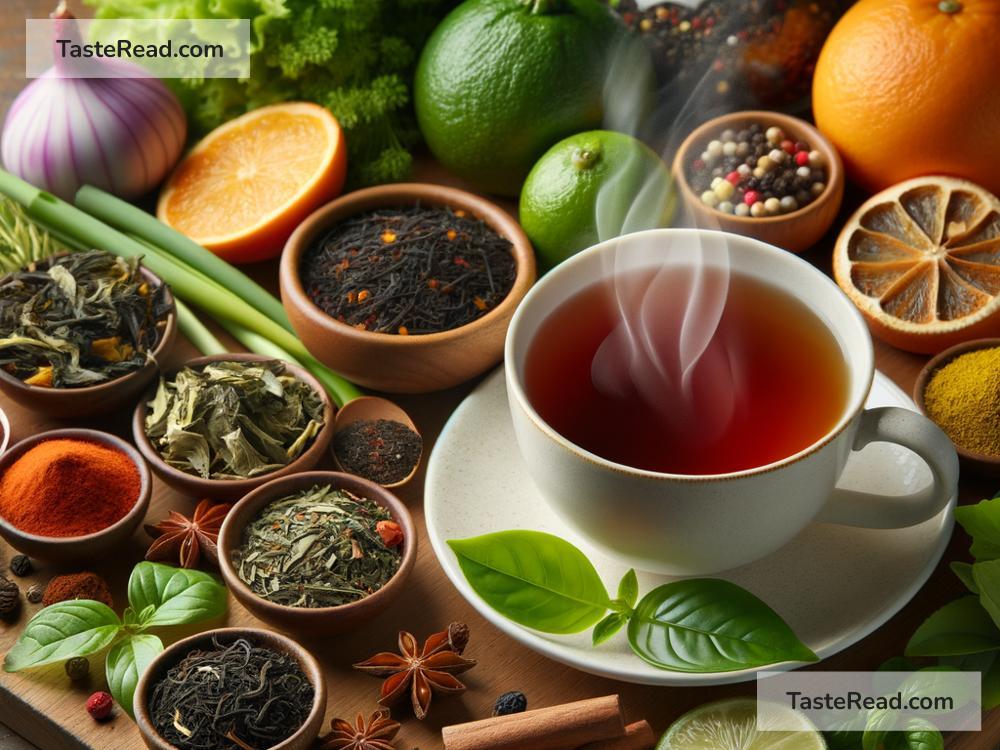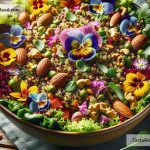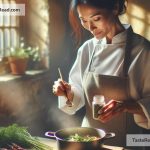Cooking with Tea: My Experimentation with Flavor Infusion
When you hear the word ‘tea’, your first thought might be of a comforting hot drink, perhaps with a splash of milk or a slice of lemon. But have you ever considered cooking with tea? Yes, you heard that correctly. Tea isn’t just for sipping; it’s a versatile ingredient that can infuse your meals with an array of delightful and unexpected flavors. My culinary experiment with cooking with tea has been nothing short of a flavor-packed journey, and I’m excited to share it with you.
The Beginning of a Flavorful Experiment
My adventure into the world of cooking with tea began one lazy Sunday afternoon. I was sifting through my cupboard, and my eyes landed on my tea collection. As a tea enthusiast, I’ve accumulated a variety of teas – green, black, white, oolong, and some herbal blends. A thought struck me; if these can make such delightful beverages, why not use them in cooking?
With curiosity as my guide, I embarked on an experiment to infuse my meals with the intricate flavors of tea. Here’s a glimpse into my journey and how you too can embrace the magic of cooking with tea.
1. Marinades and Rubs
My first experiment was with marinades. I chose a robust black tea, brewed it strong, and let it cool. Then, I used it as a base for a marinade for chicken. I added some garlic, honey, soy sauce, and a dash of ginger to the tea. The chicken soaked in this concoction overnight. When cooked, the result was astounding. The tea added a depth of flavor that was both subtle and rich, enhancing the natural taste of the chicken without overpowering it.
Inspired by this success, I also tried using finely ground tea leaves as part of a dry rub for meats. A mix of ground black tea, salt, pepper, and some herbs made for a delicious crust on a pan-seared steak. The tea added a unique, smoky flavor that was incredibly satisfying.
2. Cooking Grains and Soups
I didn’t stop at marinades. Next, I experimented with cooking grains. Instead of boiling my rice in plain water, I used jasmine green tea. The fragrant, floral notes of the jasmine tea turned the humble rice into a fragrant delight, adding an elegant touch to my dinner plate.
Tea can also add complexity to soups. I simmered vegetable broth with a few bags of chamomile tea, resulting in a soothing, subtly sweet base for a vegetable soup. This gentle infusion added a comforting dimension to my soup that plain broth could never achieve.
3. Baking with Tea
Baking was an area where tea truly shone in my kitchen experiments. Earl Grey tea-infused cookies were a hit in my house. The citrusy bergamot flavor of the tea paired wonderfully with the buttery cookie dough, elevating a simple treat into a sophisticated dessert. I also experimented with matcha (green tea powder) in cakes, which not only added a beautiful vibrant green color but also a earthy taste that balanced the sweetness of the cake perfectly.
4. Tea-infused Desserts
Beyond baking, tea can be a star in desserts. I tried my hand at making green tea ice cream and was thrilled with the unique flavor it offered – creamy, with the distinct taste of green tea that was neither too overpowering nor too subtle. Another delightful discovery was black tea-infused chocolate truffles, where the tea added a subtle richness to the chocolate.
Embrace the Experimentation
Cooking with tea is about embracing experimentation. The possibilities are endless, and the subtle nuances of tea can complement a wide range of dishes. Here are a few tips to get you started:
- Choose the Right Tea: Match the flavor profile of the tea to your dish. Delicate teas like green or white work well with lighter dishes, while robust teas like black or oolong can stand up to the flavors of heartier meals.
- Experiment with Infusion Strength: The strength of your tea can greatly affect the final taste of your dish. A stronger brew will impart more flavor, so adjust according to your preference.
- Be Mindful of Cooking Times: When using tea leaves directly in cooking, be mindful to not overcook them as this can lead to bitterness.
Conclusion
Cooking with tea opened up a new world of flavor experiences for me. It’s a simple, yet innovative way to add depth and character to your cooking. Whether you’re a tea lover or just someone looking to experiment in the kitchen, I encourage you to explore the potential of cooking with tea. It’s an adventure in flavor that could lead to your next great culinary discovery. Happy cooking!


